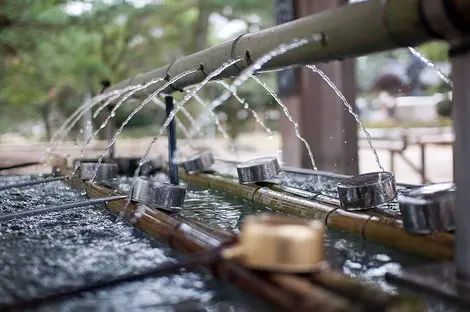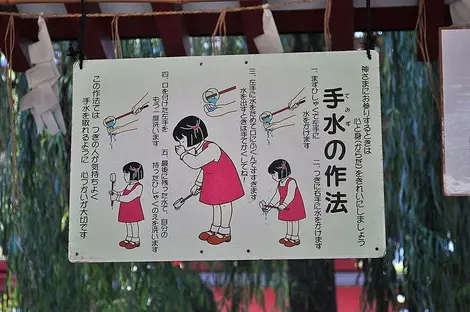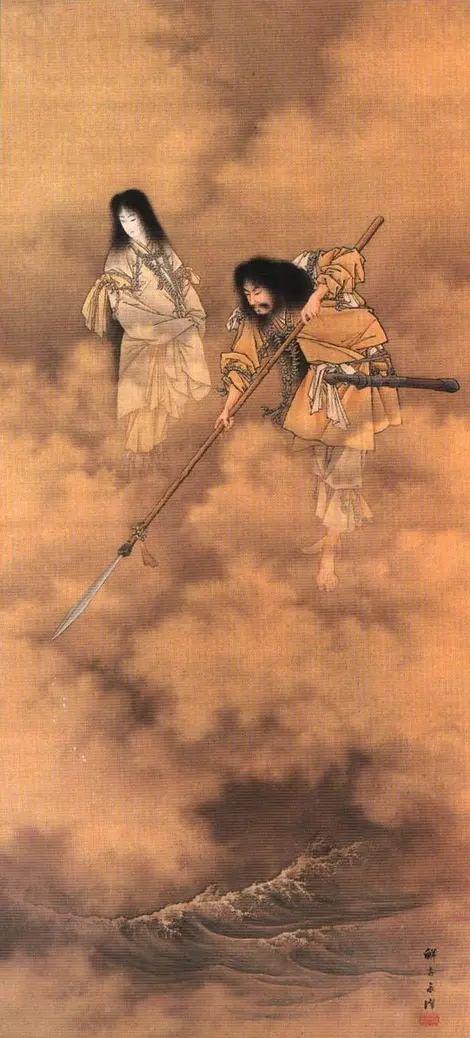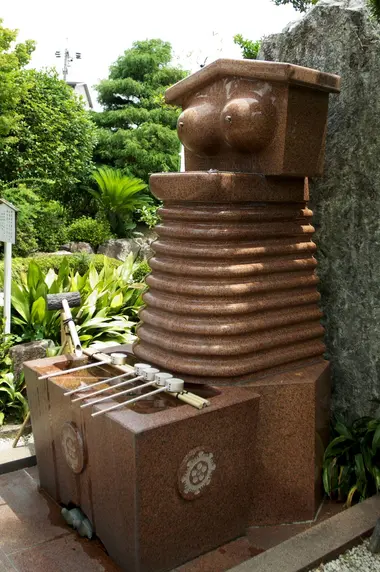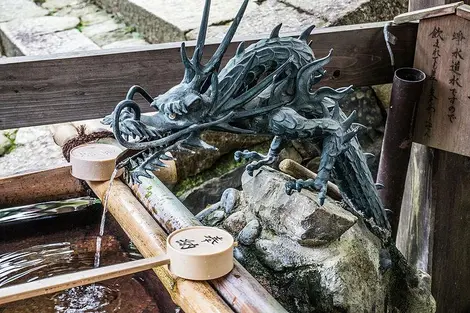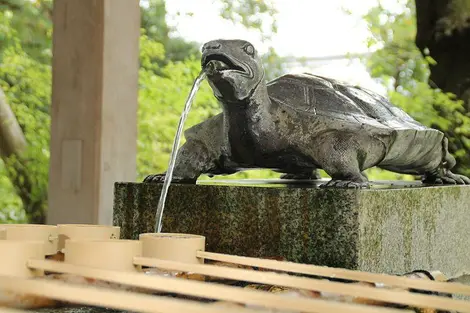Chozuya 手水舎
- Published on : 20/09/2018
- by : S.V.
- Youtube
Purification of body and mind
At the entrance to Shinto shrines, devotees must wash their hands and rinse their mouths with "chozuya" for purification before worship.
A bath for the origin
Purification is an essential practice of Shintoism which finds its origin in the myth of Izanagi and Izanami, the kami co-creators of the world. The Kojiki, or "Chronicle of ancient facts," a collection of the archipelago's founding myths compiled in 712 by Hieda no Are, recounts the legend of the demiurge couple and the Izanagi purification bath. When Izanami dies giving birth to the fire kami, Izanagi decides to find her in Yomi, the realm of the dead. But he is horrified to find her monstrously disfigured there. He flees, pursued by the humiliated and furious young woman, and manages to leave Yomi. Returning to the world, Izanagi immerses himself in water to rid of the impurities of the kingdom of the dead: purifying bath that heals his body and mind.
To read: 5 famous Japanese legends.
A complete purification
Purification, therefore, plays a vital role in Shinto worship and takes several forms: ablutions (misogi), prayers under a waterfall (mizugori), the harae in Shinto ceremonies during which the priest rids the faithful of their impurities by waving the o-nusa before them.
All of these practices are meant to cleanse your body and mind. Only purified worshipers can approach the kami to pray or show gratitude. For this reason, you will find on the way leading to the shrine's main building a chozuya (also called temizuya or suibansha). This fountain is intended for purification ablutions, as sometimes indicated by an engraved inscription: "wash my mind, clean my heart."
Very often, the water pours from a dragon sculpted in the image of Ryujin, the god of the sea. But sometimes, the latter gives way to a turtle, a deer, a boar, or even the chest of Senju Kannon. . Whether it is a simple stone basin or a wooden one with the most sophisticated carved pavilion, the ritual remains the same.
The different stages of the ritual
- Take the hishaku (traditional ladle) in your right hand and fill it with water.
- Clean your left hand.
- Then clean your right hand while holding the spoon with your left hand.
- Take the hishaku back to your right hand. Pour water into the palm of your left hand to rinse your mouth. Under no circumstances should you bring the spoon to your mouth or swallow the water.
- Spit out the water as discreetly as possible in the chute at the foot of the fountain.
- Cleanse your left hand again.
- Hold the spoon upright with both hands and run the water down the hishaku to rinse it.
- Return the spoon to its original location.
You are now ready to enter the shrine!
To go further: The notion of god in Japanese.




